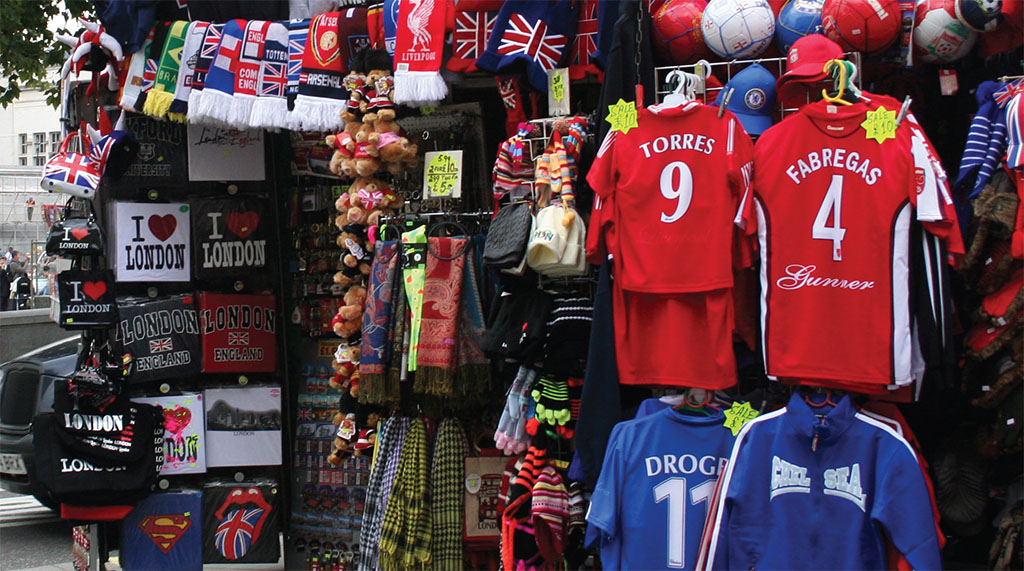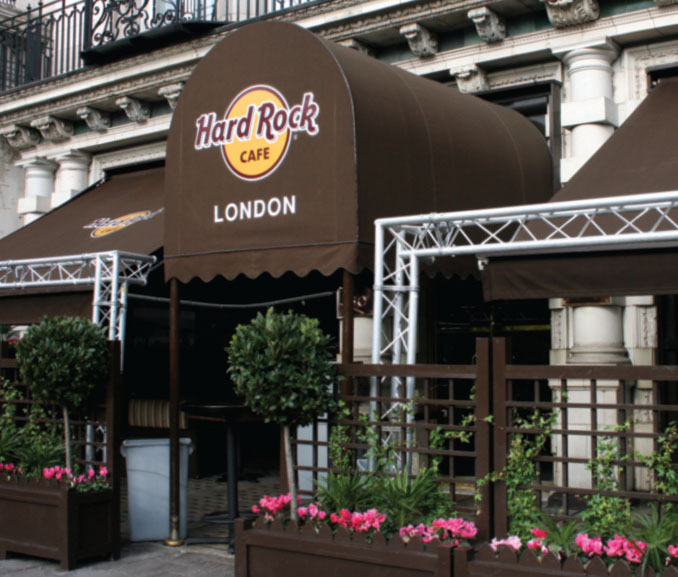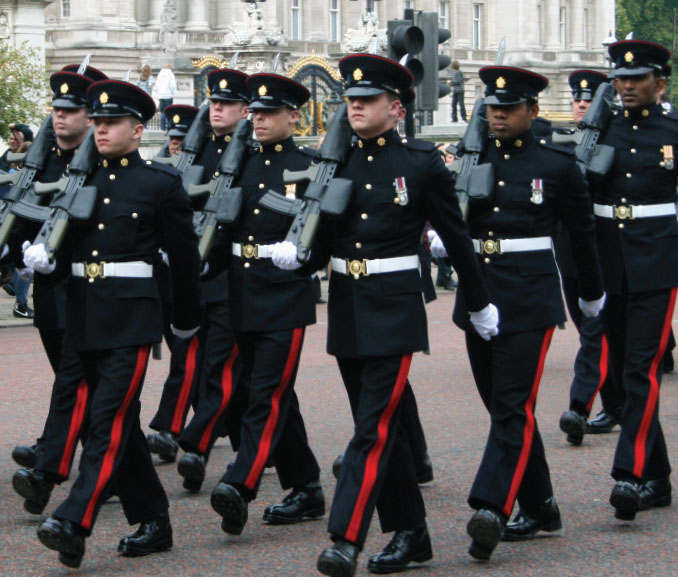
[caption id="WhatsUpWithLondon_img1" align="aligncenter" width="231"]

[caption id="WhatsUpWithLondon_img2" align="aligncenter" width="1024"]

DANA HUNTLEY
OVER THE NEXT FEW MONTHS, London will take center stage in the world’s attention. Following the great celebration of Her Majesty’s Diamond Jubilee, the London 2012 Olympics will arrive quickly this summer. The capital will be spit-shined, shipshape and Bristol fashion, with all the pomp, circumstance and ceremony that only the British seem to be able to muster.
Behind the scenes, though—beyond the camera pans on bridges over the Thames, the dome of St. Paul’s and such—London has changed considerably over the past generation. The differences may not be apparent to the casual visitor, but they are much remarked on these days by her longstanding friends and by the English alike.
London isn’t Britain. It isn’t even English—even though almost 20 percent of Britain’s population lives in or around its environs. That’s nothing new. For decades I’ve been reminding folks that this great, elegant world capital is a thing apart. You can’t travel the pond, spend a week in London and come home saying, “I’ve seen Britain.” It would be like Brits coming for a holiday in Manhattan or Orlando and then claiming to have seen America.
It’s difficult for most people to even grasp the size of metropolitan London. What we see when we visit is generally referred to as central London—the West End and the City. Colloquially, that is the roughly four by six mile rectangle within the Circle Line on the north side of the Thames. Apart from perhaps the immediate South Bank, few visitors to town venture much beyond those parameters.
On the one hand, who can blame them? This is where the world-class attractions are: the theaters and magnificent museums, the fabled shopping precincts of Knightsbridge and Oxford Street, the buskers of Covent Garden and the great living monuments of church and state.
On the other hand, that Circle Line encompasses a pretty small corner of London—a corner that most Londoners themselves seldom venture into. After all, the city itself has a population of more than 8 million, spread across some 600 square miles from Potters Bar to Croyden, Hounslow to Barking. In the metropolitan area lying within the M25 ring road, the population rises to more than 13 million. Milling around Soho or Bloomsbury, it’s easy to forget the sheer size of urban London. Take a spin up the London Eye, however, or view the city from one of those panoramic vistas Sandra Lawrence detailed in our last issue and the city begins to take on perspective—neighborhood after neighborhood as far as the eye can see in any direction, each with its own identity, shopping districts and football team.
Nowadays, many of those neighborhoods are ethnic enclaves, populated with folks from across the globe. More than a fifth of Londoners were born somewhere other than Britain. They have their own community centers, places of worship and newspapers in their native languages. It’s one of those changes we mentioned. That shows up in “tourist” London as well. These days, almost all service personnel in central London’s hotels, restaurants and the like, speak English as a second language.
That’s been rather off-putting for many people, especially if they arrive in London hoping to visit with the English people. Still, it is a mixed blessing. As my old mate Arthur Smith was wont to say 20 years ago: “At least Britain is still one of the few places on earth that people are lining up to get into instead of away from.” Of course, the several million British expats resident in North America, the Costa del Sol, New Zealand and Australia may have a different perspective.
That the city has social problems is a bit of an understatement. It’s difficult to reconcile the competing interests of religion, culture, education, custom and language. And, in fairness, British social policy and its benefits culture over the last 50 years has only exacerbated the difficulties.
London’s financial center of gravity has shifted as well. “The City,” that ancient square mile of London spreading eastward from Fleet Street to the Tower, used to contain all the financial institutions of Britain and its empire. Over the last 25 years, however, since Margaret Thatcher freed those institutions from their ponderous regulatory bonds, London has become (for the time being, at least) the weightiest international financial center in the world. It simply outgrew the physical space of the City and sprawled east to Canary Wharf and the Isle of Dogs. Today, some 300,000 people work in London’s metaphorical “financial district,” commuting in by Tube or train from Woolwich or Watford, or further a field.
Of course, London has always been a city in flux, living within its history and constantly growing and evolving with the times. The High Road has always led to London, or simply “up to town.” There’s no pretending that the changes of the last generation haven’t created challenging problems. The city’s infrastructure has seemingly always lagged far behind its growth. It took almost 20 years to build the M25—only to find that the completed motorway was 20 years out of date when it was finished. With at least four lanes in either direction, the ring road enjoys the dubious local sobriquet of “the world’s largest car park.”
Heathrow, the world’s busiest international airport, runs at 99 percent of its theoretical capacity. That means it takes only the slightest glitch in administration or weather to back up hundreds of flights and tens of thousands of passengers. Plans for a third runway appear permanently shelved. Mayor Boris Johnson has vocally championed building a third London airport out on the marshes near Gravesend. We’ll see. And we won’t even get into the problems of the creaking, old London Underground system. Meanwhile, the bizarre London Congestion Charge on vehicles driven into the city has done little to really relieve the traffic on the central city’s streets. It’s still “run for your lives.”
London. City of Charles Dickens and Buckingham Palace, Westminster Abbey and the Theatre Royal Drury Lane, prime time Indian restaurants and the world’s best cab drivers. Ain’t it grand! Yes, you only have to follow Sandra Lawrence’s column around the town to catch a native’s enthusiasm still surviving from Samuel Johnson’s pontification at one pub or another: “When a man is tired of London, he is tired of life.”
[caption id="WhatsUpWithLondon_img3" align="aligncenter" width="678"]

DANA HUNTLEY
[caption id="WhatsUpWithLondon_img4" align="aligncenter" width="678"]

GETTY IMAGES
[caption id="WhatsUpWithLondon_img5" align="aligncenter" width="678"]

DANA HUNTLEY
Although…unless you have the patience to match very deep pockets, I’d stay out of town this summer. Head down to Weymouth to watch the sailing, or toodle on up to Rutland. Maybe explore the coal valleys of south Wales and take in a male voice choir. But London’s a survivor; it survived the Black Death, the Great Fire and the Blitz. Sorry Barnum & Bailey, it’s still the greatest show on earth.





Comments